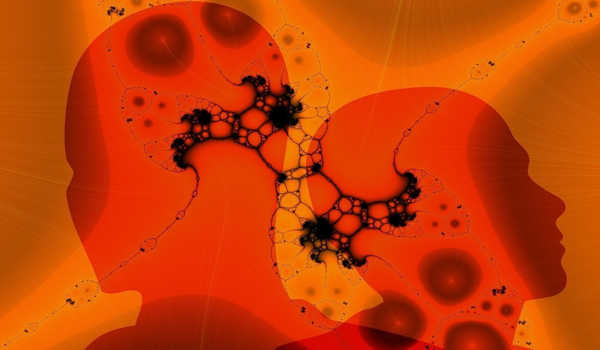Physical signals are perceived differently by people with mental health disorders than by those who do not have mental health disorders. These differences are explained by new research on interoception. Understanding the part of the brain that perceives interoception can aid in the development of more effective treatments for mental illnesses. Researchers have discovered why people suffering from mental health disorders, such as anorexia and panic disorders, perceive physical signals differently.
The University of Cambridge researchers discovered that the part of the brain that interprets physical signals from the body behaves differently in people with a variety of mental health disorders, implying that it could be a target for future treatments.
The researchers looked into ‘interoception,’ or the ability to sense internal conditions in the body, and whether there were any common brain differences in people with mental health disorders during this process. They discovered that the dorsal mid-insula, a region of the brain, showed different activity during interoception across a variety of disorders, including depression, schizophrenia, eating disorders, and anxiety disorders.
Many people with mental health disorders have different physical symptoms, such as feeling uncomfortably full in anorexia or feeling as if they don’t have enough air in panic disorder.
Researchers have shown why people with mental health disorders, including anorexia and panic disorders, experience physical signals differently.
The findings, published in The American Journal of Psychiatry, suggest that activity in the dorsal mid-insula may be responsible for these disparities in bodily sensation interpretations in mental health. Increased understanding of how people experience physical symptoms may also be beneficial to those treating mental health disorders.
We all use exteroception to navigate our daily lives, which includes sight, smell, hearing, taste, and touch. However, interoception (the ability to interpret signals from our bodies) is equally important for survival, even if it occurs subconsciously.
“Interoception is something we all do all the time, even if we aren’t aware of it,” said lead author Dr. Camilla Nord of the MRC Cognition and Brain Sciences Unit. “For example, most of us can recognize the symptoms of low blood sugar, such as tiredness or irritability, and know that we need to eat something. However, our brains interpret these signals in different ways.”

Interoceptive process differences have previously been identified in people suffering from eating disorders, anxiety and depression, panic disorder, addiction, and other mental health disorders. Theoretical models suggest that disrupted cortical processing is responsible for these changes in interoceptive processing, making people vulnerable to a variety of mental health symptoms.
Her research, on the other hand, pinpointed the source of these differences in interoception. Nord discovered differences in activity in the dorsal mid-insula of the brain between people who did not have mental health disorders and those who did, including depression, schizophrenia, eating disorders, and anxiety disorders.
“This experiment adds to decades of research demonstrating that physical and mental health are inextricably linked. Changes in one specific brain region, the mid-insula, which is involved in interpreting the physical state of the body, could be one way physical and mental health are linked,” Nord says.
Nord and her colleagues compared differences in brain activity during interoception between 626 patients with mental health disorders and 610 healthy controls using brain imaging data from previous studies. “We wanted to see if there was anything similar happening in the brain in people with different mental disorders, regardless of their diagnosis,” she explained.
When compared to the control group, patients with bipolar disorder, anxiety, major depression, anorexia, and schizophrenia had different brain activation in the dorsal mid-insula when processing pain, hunger, and other interoceptive signals.
The researchers then conducted a follow-up study and discovered that the dorsal mid-insula does not overlap with brain regions altered by antidepressant drugs or psychological therapy, implying that it could be studied as a new target for future therapeutics to treat differences in interoception.
“It’s surprising that, despite the wide range of psychological symptoms, there appears to be a common factor in how physical signals are processed differently by the brain in mental health disorders,” Nord said. “It demonstrates how intertwined physical and mental health are, but also the limitations of our diagnostic system — some important mental health factors may be ‘transdiagnostic,’ that is, found across many diagnoses.”
In the future, Dr. Nord intends to conduct research to see if new treatments for mental health disorders, such as brain stimulation, can alter this disrupted activation.
















